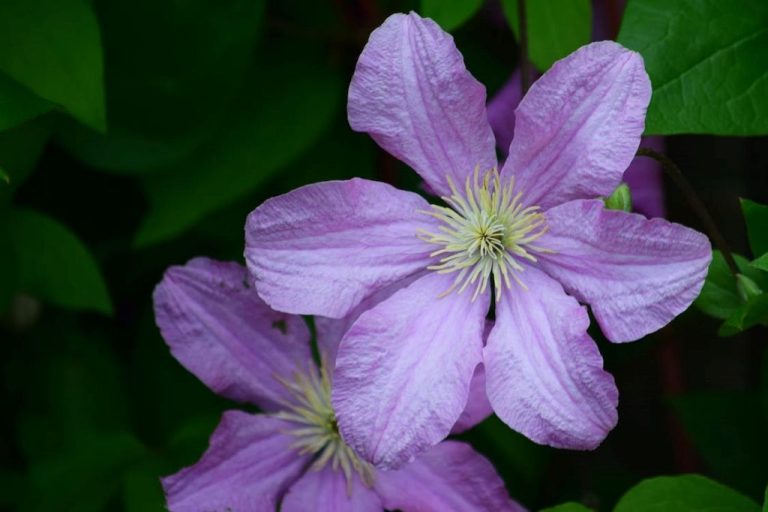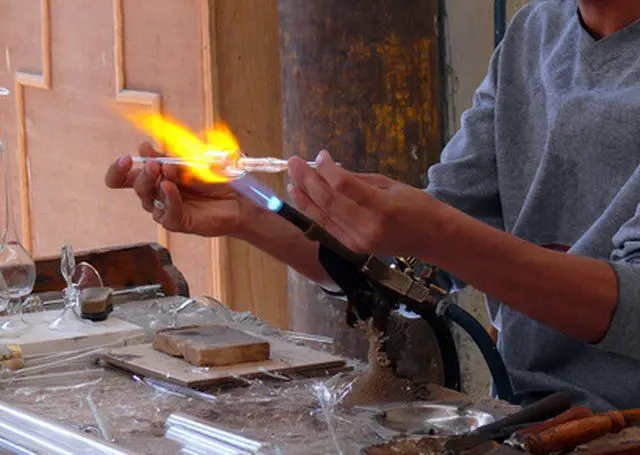Does Water Soak Through Clay Pots?
Clay pots have been used for centuries as containers for growing plants both indoors and outdoors. Their porous nature allows air and moisture to pass through the sides of the pots, creating an environment beneficial to plant roots. Clay pots come in a variety of shapes and sizes, making them versatile for gardening and plant care needs.
The porous clay material provides both advantages and disadvantages compared to plastic and glazed ceramic pots when it comes to watering. Understanding how water interacts with the clay helps gardeners determine optimal uses for unglazed terra cotta pots.
Porosity of Clay
Clay is a porous material, meaning it has small holes or pores that allow air and water to pass through. The pores in clay occur due to gaps between clay particles and any air pockets that may have formed during the clay production process. When clay is fired at high temperatures to harden it into a ceramic material, these pores remain intact.
The porosity of clay depends on the clay body composition and preparation technique. Some clays are more porous than others based on the size and quantity of pores. However, all types of unglazed clay pottery and ceramics allow some degree of water penetration.
The porous nature of clay is important when considering watering plants in clay pots. The small pores in the clay walls allow excess water to seep through and drain out, while still retaining some moisture for the plant’s roots. Understanding clay’s capacity for both liquid and air passage is key to effective plant care.
Permeability of Unglazed Clay
Unglazed clay is highly permeable and porous, allowing water to readily pass through the material. When unglazed clay pots are filled with water, the water quickly seeps through the microscopic pores of the clay. This drainage occurs because clay is composed of dense particles that leave gaps between them. Without an impermeable glaze coating the clay, the gaps and spaces allow for easy passage of water.
When unglazed pots are watered, water seeps out through the bottom and sides of the container. The porous clay acts almost like a sieve, with gravity pulling the water through the gaps between clay particles. As a result, unglazed clay pots will not hold standing water for long periods of time. The water permeability of the unglazed clay prevents water logging or saturation.
Permeability of Glazed Clay
Glazing greatly reduces the permeability of clay pots and planters. The glaze fills in pores on the surface of the clay, creating a waterproof barrier that prevents moisture from soaking through. This is because glazes are essentially a thin layer of glass that is fused to the surface through high heat in a kiln.
Unglazed terra cotta pots are porous, but when a glaze is applied, the pores become sealed off. The glazing process not only gives the pot a shiny, decorative finish but also makes it less permeable. Water beads up and runs down the sides of a glazed pot rather than being absorbed into the material.
While unglazed clay is quite permeable and wettable, a pot with any type of glaze – from a basic clear glaze to more decorative colored glazes – will have greatly reduced permeability. The glaze provides a hardened non-porous surface that water cannot easily penetrate. So in terms of allowing moisture through, unglazed and glazed clay pots differ significantly.
Water Passage Over Time
When water is initially added to an unglazed clay pot, it quickly soaks into the porous terracotta material. However, over time the rate of water passage decreases as the terracotta clay becomes saturated with water. This causes the pores in the clay to swell shut and minerals from water and fertilizers will clog the pores. As a result, less water is able to flow through the clay pot walls.
The permeability of clay pots declines over time from repeated watering and mineral build up. This reduces the rate that water can soak into the pot and reach the plant’s roots. It’s important to monitor older clay pots and watch for decreased drainage. Replacing old clay pots or scrubbing them to unclog pores can help restore water flow.
Water Retention in Clay
One of the benefits of clay pots is their ability to retain some moisture in the clay itself, which the plant can then access as needed. Clay is porous and permeable to water. When you water your plant, some of the water penetrates into the clay pot and is held within the microscopic pores of the clay material. This water then slowly evaporates through the porous clay walls, providing a steady source of moisture for the plant’s roots between waterings.
The moisture retained in the clay pot helps buffer the roots against drastic moisture fluctuations. As the soil starts to dry out on the surface between waterings, the plant can draw moisture from the damp clay to supplement its needs. This helps prevent damage to roots and stress to the plant during short dry spells.
The moisture retained within an unglazed terra cotta clay pot can potentially keep the plant hydrated for a day or two longer than if it were planted in a non-porous container. However, extremely porous clays may not retain useful amounts of moisture. The capacity to hold adequate water varies by clay type and firing method.
Advantages of Permeability
The porous nature of unglazed clay pots provides two key benefits for plants. First, it allows oxygen to reach the roots. Plant roots need air as well as water to remain healthy. In a nonporous container, poor drainage can lead to root rot due to lack of oxygen. The permeability of a clay pot prevents waterlogging and allows air circulation to the roots.
Second, clay’s permeability prevents overwatering. Excess water will slowly seep through the container walls rather than pooling at the bottom. This makes it more difficult to oversaturate the soil and damage the roots. The plant only retains as much moisture as the growing medium can hold. The rest is wicked away, maintaining an optimal moisture balance.
Disadvantages of Permeability
While the porous nature of unglazed clay pots allows water to pass through, it can also cause some challenges for maintaining healthy plants. The biggest drawback is that clay pots tend to dry out more quickly than non-porous containers. As moisture evaporates through the walls of the pot, it requires more frequent watering to keep soil evenly moist.
If the plant’s water needs are not kept up with, the roots can dry out completely leading to damage and wilting of leaves. The evaporation rate is accelerated in hot, dry and windy conditions. This makes clay pots more prone to underwatering issues than plastic or glazed ceramic pots that retain moisture much better.
Growers using clay pots must pay close attention to the moisture level of the soil and water more frequently, sometimes even daily in peak summer heat. Soil amendments can help retain water for longer periods. Grouping plants together also creates a more humid microclimate inside to counteract the drying effect of air currents across the porous clay walls.
Tips for Using Clay Pots
Clay pots can provide many benefits to plants if used properly. Here are some tips for getting the most out of clay pots:
Watering Tips
Because clay is porous, water can evaporate through the sides of the pot. To account for this:
- Water clay pots more frequently than plastic pots. Check soil moisture daily and water when the top inch becomes dry.
- When watering, soak the entire pot by submerging in water or allowing a thorough slow drip. This will moisten the pot walls and soil.
- Group clay pots together to create a more humid microclimate via evaporating water.
Drainage Tips
Clay’s porosity allows excess moisture to escape the soil. To prevent overwatering:
- Ensure clay pots have drainage holes at the bottom to let water flow out.
- Add rocks, pebbles, or sand at the base to elevate the soil above any drained water.
- Repot plants in clay pots one size larger to leave extra room for soil and roots.
Sealing and Glazing Tips
Applying a sealant or glaze to the clay pot will reduce porosity. Consider:
- Seal the pot interior if water dries out too fast, using a food-safe sealant.
- Glaze the pot exterior to limit evaporation and prevent dirt accumulation.
- Leave the drainage holes unglazed for moisture to escape.
- Unglazed terracotta pots allow natural evaporation and are best for dry climates.
Conclusion
Clay pots allow some permeability of water but also retain a certain amount. This can have both advantages and disadvantages depending on the plant. The porosity creates good drainage and airflow for plant roots, preventing overwatering. It also provides a small reservoir of moisture between waterings. However, high permeability means evaporation and frequent watering may be needed for some plants. Less hardy plants may suffer from excessive drainage. Overall, clay’s permeability makes it a good choice for many plants, but consideration should be given to the specific needs of the plant variety.
With the right plant match, clay pots provide natural moisture control. The porosity prevents saturation while retaining just enough water. This makes maintenance easier by reducing the risk of overwatering. For plants that thrive on fast drainage and consistent air to the roots, unglazed clay is an optimal choice. With care given to plant selection and watering frequency, clay pots allow healthy growth.



